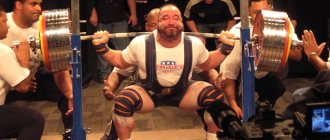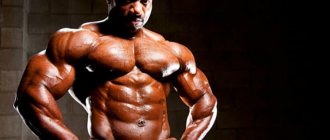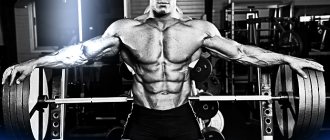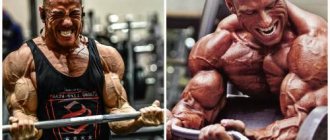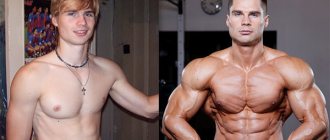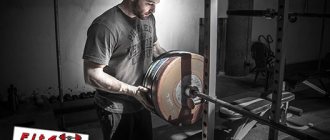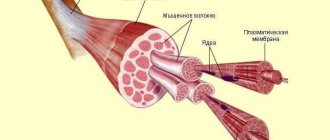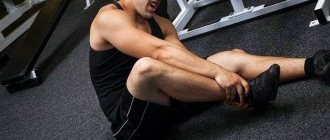Faster. Higher. Stronger. We all know that for professional athletes, life is scheduled as a series of training sessions, and other areas of life barely fit into the busy schedule. Achievements at the Olympics and championships seem to us something transcendental and unreal, and champions seem like superhumans. Competitions are very interesting to watch on TV or in the stadium, but it is completely incomprehensible how we, people who do not strive for medals, can have anything in common with these incredibly strong and resilient athletes.
If we don’t need to run a distance 1.5 seconds faster than a friend, jump further than a colleague and dive better than a neighbor; if we just want to be in good shape, be fit and easily climb to the 7th floor on foot, can we borrow some techniques from sports? We definitely can! After all, we and athletes use the same mechanisms and properties of the body.
Adaptation is the leading force in developing the body's capabilities. We have already touched on the importance and significance of adaptation processes in increasing the effectiveness of training in the article “Changing the load to increase the effectiveness of the training process.”
One of the well-known tools that uses the body’s adaptive capabilities is the periodization of the training process.
| Periodization is long-term planning of physical activity, in which training is built according to a specific system, consisting of specific phases of varying duration, purpose and regularity. |
At the same time, to achieve the desired results, variables (sets, repetitions, load, number of exercises, rest periods, etc.) are planned in such a way as to trigger specific adaptation mechanisms. Phases can last from several days to several years.
There are three main types of periodization of the training process and each has its own pros and cons. Below we will look at each of them in detail.
LINEAR PERIODIZATION
"Classical" or "linear" periodization is based on varying exercise volume and load over several predictable periods. The concept of classical periodization was first introduced by the Russian scientist Lev Matveev and subsequently expanded upon by Stone and Bompa.
| The training program is divided into separate periods, which are named based on the duration of each. Planning over a 12-month period is called a macrocycle , which includes two (or more) mesocycles of 3-4 months, which, in turn, are divided into microcycles of 1-4 weeks each. |
Each mesocycle is aimed at developing a certain quality or indicator, the microcycle within the mesocycle helps to work out the parameter comprehensively, and the macrocycle provides the final result of the entire period.
For example, bodybuilders, preparing for competitions, can structure their mesocycles as follows:
- Workouts to increase muscle strength.
- Training to increase muscle volume.
- Relief work.
In each microcycle within the mesocycle, exercises are structured so as to work all muscle groups, and the result of such a macrocycle will be readiness for competition.
If the goal is the comprehensive development of physical characteristics and good shape, using the #sekta training base, mesocycles can be built, for example, like this:
- Working on stabilizer muscles. Pilates training, exercise therapy for the back muscles, strengthening the abdominal muscles.
- Increased endurance. Interval and cardio training - start with beginner-level workouts and gradually increase the load.
- Increased strength and muscle definition. Strength training - also increase the load gradually.
Pros of the approach
- Predictability. Training schemes for repetitions and load are predictable for both the athlete and the coach. Typically, each phase has only one focus, making it immediately clear what to work on now and what to expect next.
- Gradualism. Each parameter (strength, power, speed) develops gradually. Advantages over other approaches to training are achieved here due to the fact that each subsequent phase begins after the successful completion of the previous phase.
- Clarity. Clear repetition/load schemes make it possible for non-professionals to implement this approach.
Disadvantages of the approach
- One-pointedness. The training schedule is set to one peak competition per year. For athletes who compete in different sports or who have several competitions a year, and simply for those who train for themselves, the proposed load schedule may be far from optimal in terms of health, adaptation processes and goals.
Benefits of Periodization
Now let’s delve into what good a periodization scheme can bring you and why you can’t do without it. Taking into account the number of advantages of using periods, it is much easier to consider what will happen without using the technique. What happens if you don't alternate cycles with different types of loads, even if you give your best in every workout?
- The body will begin to adapt even to heavy training and will not need additional muscle tissue. As a result, the growth of strength and mass will almost completely stop, and muscle endurance will noticeably decrease.
- Uneven load on muscle fibers. It leads not only to an imbalance in muscle growth, but also to a deterioration in strength performance and injuries.
- When constantly working with submaximal weights to failure, the central nervous system will be severely overloaded. This leads to exhaustion, decreased immunity, deterioration of neuromuscular communication and other pathologies.
Simply put, to get pumped up, there is no need to constantly work with heavy weights and to failure. On the contrary, this will slow down the progression. A well-thought-out plan is the key to maximizing efforts and stable progression without overtraining, harm to the central nervous system and other troubles. Alternation of periods is used in Olympic sports and allows you to accomplish the main task - to bring the athlete to the peak, that is, competition. Therefore, such a training structure is needed both in athletics and in any other sports.
NONLINEAR OR WAVE-LIKE PERIODIZATION
Another popular periodization model is “nonlinear” or “wavy” . It was first proposed by Canadian trainer Charles Poliquin in the early 70s.
| The main idea of nonlinear periodization is that the volume and loads change more often (daily, weekly, biweekly). Lighter loads alternate with intense ones, and the neuromuscular system is able to recover more efficiently. Typically, during each phase, one parameter is selected as the focus, and the rest are trained in a maintenance mode. |
An example of wave periodization is the training process during the #sekta basic course - within the framework of a weekly microcycle, training is alternately performed aimed at various physical qualities, which makes it possible to more effectively use the adaptation processes occurring in the body.
To enhance the benefits of non-linear periodization within our program, for example, after completing the course, you can create your training plan so that from week to week individual qualities are highlighted and primarily worked out - endurance, strength, power, etc.
Pros of the approach
- Strengthening adaptation processes. Frequent changes in loads can lead to better neuromuscular adaptation compared to linear periodization, since the loads are more unpredictable and the body is forced to adapt to them.
- Recovery. The program includes recovery periods.
- Stability of indicators. Due to the parallel nature of training, several physiological parameters can develop at the same time and it is possible to avoid the effect that one of them begins to “sag”, as happens with linear periodization.
Disadvantages of the approach
- Stepping. Until a certain base in endurance is achieved, some power techniques may not be available to the athlete (in power sports, for example, this is a weight clean, a snatch).
- Unevenness. In the process of wave-like periodization, we cannot be sure that individual characteristics are developing optimally, since work is always carried out simultaneously on several parameters.
Putting training periodization into practice
Training periodization has stood the test of time on the simple fact that there are so many progressions and ways to structure your training so you can be at your best when it matters most. Failure to use any form of periodization for training can result in overtraining, an inability to recover appropriately for progress, and an inability to see the progress you deserve since the time you began training.
BLOCK PERIODIZATION
Block periodization involves highly concentrated, specialized training loads. Each block in the training cycle contains a large volume of exercises focused on the development of specific target abilities to ensure maximum adaptation in a minimum time.
Traditional models often have only one “peak” per year, while many athletes (basketball, football, baseball, etc.) may have multiple competitions per year.
The linear periodization model improves fundamental qualities, but they tend to decline in the off-season.
| Block periodization allows you to develop qualities in such a way that indicators are maintained year-round. This is achieved due to the delayed (residual) training effect, when changes persist even after the cycle is stopped. |
Researcher Issurin found that aerobic endurance and maximum strength can be maintained for up to 25-35 days, strength endurance for up to 10-20, and maximum speed for up to 2-8 days .
Each residual effect corresponds to certain physiological prerequisites, determined by the body’s adaptive response to different types of stress. For example, maximum strength is supported by improved neural mechanisms and muscle hypertrophy, and aerobic endurance is supported by increased numbers of aerobic enzymes, mitochondria and muscle capillaries, increased blood oxygen capacity and glycogen storage, and higher levels of fat metabolism.
Another difference in the approach is that the program is broken down into 2-4 week blocks, while linear and non-linear models have at least four-week phases. Thus, an athlete can develop strength and power to peak performance within four weeks, while with classic models it can take up to several months .
Block periodization involves three successive phases.
1. Accumulation (accumulative phase). Helps build a working training base. At this stage, a large volume of exercises is performed at 50-70% of the repetition maximum, and these are basic exercises. Typically the phase lasts 2-6 weeks depending on the characteristics and goals of the athlete.
2. Transformation phase. Involves specific exercises with heavy loads performed at 75-90% of the repetition maximum.
3. Implementation phase. Consists of even more specific exercises performed at 90% of the repetition maximum or more.
| One example of the use of block periodization in #sekta training programs is #sektabootcamp, where each week a specific focus (strength, endurance, relief) is highlighted, but all other indicators continue to be worked on in the background. |
The first week can be classified as the accumulation phase, the second and third weeks as the transformational phase, and the fourth week as the implementation phase.
If you went through the program, you can independently identify those qualities that were not focal during these weeks and create a further program based on them.
For example, it could be flexibility, balance, plyometrics - depending on your goals. Training aimed at other qualities should remain, but in a smaller volume.
| Be sure to include recovery periods between intense blocks - the described delayed training effect will help you maintain your performance at a high level. |
At the moment, everyone agrees that training programs based on periodization are clearly more effective than those that do not include periodization. However, the effectiveness of each method is still being studied and researched, and a clear answer has not yet been found, although block periodization currently stands out as somewhat more effective than traditional ones (linear and nonlinear models).
Here are a few observations from comparative studies.
- Block periodization has shown advantages over traditional periodization in terms of strength, motor efficiency and performance and, in general, in better results of athletes in the disciplines of kayaking and canoeing.
- A more significant increase in a number of characteristics of the group of football players training according to the block program was established compared to those who trained according to the traditional protocol.
- The advantages of block periodization over traditional approaches have been noted in the development of strength, power, peak oxygen consumption and performance in skiers, athletes in the disciplines of cross-country running, football, biathlon and cycling, and strength sports.
Definition of periodization
The concept of periodization is inextricably linked with the concept of cycling. To some extent, the macrocycle can be called periodization of the training process, although periodization is a somewhat generalized concept of the macrocycle, while cycling is a detailed training plan.
Periodization can also be called a mesocycle dedicated to developing a certain quality of an athlete, for example, a period of working on endurance or strength.
So, having understood the basics of cycling and periodization, you can proceed directly to their detailed analysis.
COMPARISON OF APPROACHES
Sports and physiology experts conduct a lot of research aimed at determining which approach is most effective, because the answer to this question is the key to better results in competitions. But for those people who play sports simply for health, well-being, development of strength and endurance, this knowledge can also be useful.
The idea of using periodization tools for non-athletes has sparked some interesting research. Here are some results.
Conclusion No. 1An experiment involving groups of obese people using two periodization models—linear and wave—found that both groups showed significant reductions in body weight, BMI, total body fat, visceral and subcutaneous fat, total cholesterol, and low-lipoprotein cholesterol. density, blood pressure and increases in lean mass, maximum oxygen uptake and muscle endurance. However, only the wave periodization group showed a decrease in insulin concentrations and HOMA-IR (homeostatic model of insulin resistance). In simple terms, wave periodization helps combat obesity and metabolic syndrome in the long term. |
Conclusion No. 2Other notable studies have attempted to establish links between human health outcomes and the use of various training approaches in non-athletes, both periodization and other concepts. Their results confirm the significant positive impact of a regular training process, including one built on the principles of periodization, on people’s health indicators - ranging from risk factors for cardiovascular diseases, bone density to reducing pain and the severity of symptoms of various diseases. |
Conclusion No. 3The positive effect of physical activity on psychological state is known. However, in programs where the exercises were constantly changing, remaining feasible but challenging for development, study participants felt more interested and had a more positive attitude. It has been established that periodization of the training process allows to reduce the level of injuries and provides an emotional reboot, and therefore is one of the most effective approaches to organizing the activity of the general population. |
It is important to note that despite hundreds of existing studies, at this stage it is impossible to draw a conclusion about the unambiguous advantage of one periodization model over another . The scientific community continues to conduct research, including one aimed at studying the effects of various training programs on people who simply want to be healthy and stay in good shape.
Why periodization is needed
A long-known secret of bodybuilding says that in order to increase muscle mass and increase strength, training must go beyond the limits of the body’s usual load. Initially (the first year, or even a year and a half), almost any hard training produces the desired result - muscles grow, strength increases, and you don’t need to look for any wisdom, just practice regularly using basic exercises.
However, there is a minor drawback - over time, the body adapts even to super-heavy and super-volume loads, after which it (the body) will no longer need to increase the reserve of muscle tissue. I once published the secrets of bodybuilding, where it was written that muscles consist of two types of fibers, which actually develop differently. By exercising monotonously, you will involve only part of the muscle fibers in the work, while others will be left out. Accordingly, the muscle will grow partially.
In addition, I should note that changing the types of load will certainly cause hyperplasia and hypertrophy of muscle fibers (to put it simply, the number of fibers will increase and muscle volume will certainly increase).
And another advantage to periodization in bodybuilding is the banal, but so important concern about health. What nervous system is capable of living on the edge for many years? I think only genetic mutants can do this. The body must at least sometimes rest from brutal training, otherwise sooner or later it will deplete its resources.
PERIODIZATION IN AMATEUR TRAINING
For a person whose main goal is to achieve and maintain optimal physical fitness, periodization should be understood as changing the parameters of training sessions at certain intervals. When planning your training process, you can use the following scheme.
1. Define your goal. Reducing fat mass, developing strength or endurance, relief, increasing flexibility and so on.
2. Outline ways to achieve the goal. What type of training will you need, how long will the planned training cycle take, what opportunities do you have.
3. Connect the moment of pleasure from the activity. Consider possible activities not only for their effectiveness, but also based on your preferences. For example, from a set of cardio exercises, you may prefer running or Nordic walking, cycling or jumping rope, aerobics or energetic dancing. You can develop flexibility with various types of yoga, stretching or dancing, etc.
4. Identify the phases - microcycles, mesocycles, macrocycles. You can rely on the time frames offered by various approaches to sports periodization, or outline your own based on your feelings and current circumstances.
5. Plan the intensity and volume of loads within the phases. Proceed from a gradual increase in loads. Be sure to include periods of active rest or recovery in your program. After such periods, begin the next phase with less intense loads than before the break.
| Remember - alternating periods of rest and work is the key to maximizing the use of adaptation mechanisms, and therefore to greater results. |
6. Review the program regularly. Assess your developing characteristics, your well-being, mood and current life circumstances.
As with building a nutritional system, the training process requires a certain amount of individual experimentation in order to determine what works for you.
Plan your training cycles, be sure to include an element of challenge, but watch yourself and be prepared to flexibly change the load, and then the body will respond to you with gratitude and good shape.
Author: Anna Nesterova, strength sports coach, curator of the Ideal Body School #sekta
References: 1. Daniel Lorenz, Scot Morrison, Current concepts in periodization and conditioning for the sports physical therapist.
2. V.B. Issurin, Block periodization in sports training 3. Kelley Strohacker, Daniel Fazzino, Whitney L. Breslin, Xiaomeng Xu, The use of periodization in exercise prescriptions for inactive adults: A systematic review 4. Keith Painter, Guy Haff, Michael Ramsey, Jeff McBride, Travise Triplett, William Sands, Hugh Lamont, Margaret Stone, Michael Stone, Strength Gains: Block Versus Daily Undulating Periodization Weight Training Among Track and Field Athletes 5. C.de Lima, DA Boullosa, AB Frollini, FF Donatto, RD Leite, PRGGonelli , MIL Montebello, J. Prestes, MC Cesar, Linear and Daily Undulating Resistance Training Periodizations Have Differential Beneficial Effects in Young Sedentary Women. 6. Denis Foschini, Ronaldo C. Araújo, Reury F. P. Bacurau, Aline De Piano, Sandro S. De Almeida, June Carnier, Thiago D. S. Rosa, Marco T. De Mello, Sérgio Tufik and Ana R. Dâmaso, Treatment of Obese Adolescents: The Influence of Periodization Models and ACE Genotype. 7. Bartolomei S, Hoffman JR, Merni F, Stout JR. A comparison of traditional and block periodized strength training programs in trained athletes. 8. Brad H. DeWeese, Guy Hornsby, Meg Stone, Michael H. Stone. The training process: Planning for strength–power training in track and field. Part 1: Theoretical aspects.
Periodization cycles
For example, look at the periodization in the most popular game in the world - football:
Phase No. 1 – strength and mass (March-May)
The main goal is to gain maximum strength and gain a little muscle mass in order to become more durable and prepare the ligaments and joints for the harsh realities of matches.
Phase No. 2 – training the heart and blood vessels (June-August)
Interval training is used, plyometrics are included in the work to develop flexibility and agility, and a lot of running training to prepare the heart for heavy loads during matches.
Phase No. 3 – technique and skills (September – December)
At this phase, the main thing will be to maintain the gained shape and improve skills; it is during this period that the peak of the gained physical shape is maintained.
Phase No. 4 – recovery (January-February)
The body has done a good job, but in extreme mode it cannot work constantly; time is needed to recover and replenish strength.
Cycling training
Cycling is one of the methods of periodizing a training program within one cycle. Cycling involves changing only the intensity and volume of the training program.
It is not related to the number of exercises and sets. The number of exercises, sets, and classes per week is determined by periodization (although very often in the literature cycling and periodization are mixed and interpreted differently).
Thus, the main idea of cycling in bodybuilding is to gradually increase the total load over certain periods of time and soften the load after reaching a certain maximum, at which subsequent maintenance of the rate of change in the load will not lead to a proper response from the body and, in particular, the process of muscle synthesis fabrics.
Story
Load cycling is a way of periodizing the quality of the training process to ensure constant progress.
Load cycling involves micro- and macro-periodization, when an athlete changes training volume or relative intensity from workout to workout within one week, or when the goal of a training program changes over a longer period.
Accordingly, periodization within one week is micro cycling, and periodization within a longer period is meso and macro cycling.
The theory of cycling was developed back in the USSR, where it was used in weightlifting, later the theory was adapted for competitive triathlon, and at the moment the cycling method is being adapted for bodybuilding, which is due to its popularization.
Basic principles of cycling
Cycling the load allows you to avoid the presence of “weak points”, since the athlete periodically places emphasis on the development of different speed-strength indicators, and also, what is especially important, periodization allows you to avoid overtraining, since at an advanced level linear progress, sooner or later, leads to stagnation.
Cycling methods were developed by such methodologists as Georgy Funtikov, Yuri Verkhoshansky, Anatoly Chernyak and others. Methods were developed for weightlifting, and accordingly, they have to be optimized for powerlifting and bodybuilding, which has already been done for the first, but not yet for the second.
This is due to the fact that professional powerlifters use cycling, and professional bodybuilders proceed from simpler training schemes, since the specifics of training, when using pharmacology, for hypertrophy of muscle structures, do not require such a strict cycling system.
But in natural bodybuilding, periodization is necessary, since “naturals” progress only with progress in speed and strength indicators.
There are different approaches to periodization in bodybuilding, but they are all based on the same principles. There are three different cycles in terms of time frame and nature - microcycle, mesocycle and macrocycle.
A microcycle is a short cycle (several days, most often a week), which includes several separate workouts.
A mesocycle is made up of several microcycles. The mesocycle is a phase of the training process that pursues certain goals - increasing muscle mass, improving strength performance, fat burning and relief (or the so-called “drying”).
As a rule, in addition to full-fledged training microcycles aimed at the chosen goal, a less severe softened microcycle is added at the end of the mesocycle.
Moreover, the higher the load in the “main” microcycles, the lower it should be in the “recovery” cycle. The average duration of the mesocycle is about a month, but can reach 8-12 weeks.
A macrocycle is a combination of several mesocycles, which together solve the main task of training. The use of the macrocycle is most relevant for experienced bodybuilders and competitive bodybuilders.
Periodization at the initial stages of strength training can also be based on mesocycles. However, at an advanced level, in this case, one can observe a certain stagnation in the development of muscles and strength indicators, which is overcome by periodization within the annual macrocycle.
Widespread programs often involve the bodybuilder participating in competitions and providing for peak fitness during the competition period.
Such a macrocycle includes a preparatory period, consisting of several mesocycles, which are specific phases in preparation, a competitive period, with the goal of achieving maximum (peak) form, and a transition period, restoring strength and preparing for the next annual cycle.
When planning cycles, it should be taken into account that if periodization is used in several exercises, the development of these cycles should occur in parallel to each other.
Otherwise, the cycle will lose its advantage over the usual approach - there will be no periods during which the body recovers from increased loads, since during the recovery period in one cycle the load in another cycle will increase.
Periodization - what is it?
Most professional athletes prepare for the sports season using periodization. The periods usually consist of 4–6 phases. Each phase has its own goal. When it comes to bodybuilding, periodization can be a great tool if you plan it out well.
When your body has finally caught up with the crazy training routine and fatigue sets in, you change the game. You change your point of focus and increase muscle stimulation to trigger a new series of adaptations.
Typically, each training phase consists of 12 week cycles. Changing your goals and training style in each phase can transform your body and help you quickly overcome a training plateau.
Changing your goals will help you transform your body and quickly overcome your training plateau.
Main mesocycles
Mass gain (8-12 weeks): is the main mesocycle in bodybuilding, which, in turn, involves micro-periodization, due to which bodybuilders who do not use pharmacology can avoid stagnation, achieve maximum muscle growth and progress in speed and strength indicators. Since for a “natural” person changing the quality characteristics of muscles is the only way to achieve their hypertrophy, cycling is the only way to progress when the linear progression of loads no longer works.
The simplest way to cycle a given mesocycle is to alternate the level of volume of light, moderate and heavy training, when the athlete trains lightly for 1 week, moderately for the second, and hard for the third, while the intensity (% RM) increases linearly from the beginning to the end of the mesocycle. The mass gain mesocycle implies an intensity range of 40-80% RM (usually 60-80%). For example:
Week - 1:
- Workout - 1: 70% RM x 15 reps x 3 sets (easy workout)
- Workout - 2: 70% RM x 15 reps x 4 sets (moderate workout)
- Workout - 3: 70% RM x 15 reps x 5 sets (heavy training)
Week - 2:
- Workout - 1: 75% RM x 12 reps x 3 sets (easy workout)
- Workout - 2: 75% RM x 12 reps x 4 sets (moderate workout)
- Workout - 3: 75% RM x 12 reps x 5 sets (heavy training)
Week - 3:
- Workout - 1: 80% RM x 8 reps x 3 sets (easy workout)
- Workout - 2: 80% RM x 8 reps x 4 sets (moderate workout)
- Workout - 3: 80% RM x 8 reps x 5 sets (heavy training)
Many athletes vary intensity in a non-linear manner and may train in the 6-8 rep range and then the next week use a 12 or 20 rep set-up, which allows for different muscle fibers to be recruited and can provide energy.
In the case of split-program classes, the volume of training varies in a similar way. For example, with a 2-day split:
- Week - 1: hard bottom workout, moderate top workout
- Week - 2: moderate bottom workout, light top workout
- Week - 3: light bottom workout, hard top workout, etc.
Strength period (3-6 weeks): this is a mesocycle, which sometimes should replace purely bodybuilding schemes, during which the athlete works on his strength indicators in the range of 3 to 6 repetitions (RM more than 80%).
In essence, this is the use of powerlifters’ layouts, which make it possible to give a qualitatively different load to the muscles, ligaments, joints, central nervous system and other body systems, due to which the athlete can increase working weights and, as a result, gain additional kilograms.
It is recommended to include a strength cycle in the annual plan 1-2 times a year, depending on the athlete’s fitness and the reaction of his body to this type of training. Very often, a strength cycle is carried out before gaining weight.
Drying (8-12 weeks): This is a period of reducing the level of subcutaneous fat. “Drying” is also called eyeliner for competitions in professional bodybuilding, which is aimed at dehydrating the body.
However, a period of fat reduction must be included in the training plan, due to both practical and physiological factors.
The relevance of reducing the level of subcutaneous fat, in particular, is due to anabolic resistance, which a program for gaining pure muscle mass can avoid.
In any case, 1-2 months a year must be devoted to “drying” in order to avoid both a number of side effects of a too long period of weight gain, and to unload the nervous and muscular systems.
Training intensity can be in the range of 60-20% RM. Cardio training and interval training are also actively involved.
Bodybuilding as a way of life
Let's face it: most of us are not going to become Mr. Universe. For most of us, bodybuilding is a way of life. A bodybuilder is something else.
Most people, standing in front of a mirror, get excited about lifting weights for two reasons: vanity and fear.
We are driven by passion, pain, hard work and success. Bodybuilding is the epitome of discipline, hard work and the ability to overcome obstacles. Why not take the time to create a plan and train according to it, like other athletes do to achieve high results in sports? After all, ladies and gentlemen, life is a sport!
Training the same way for an entire year without changing is like trying to become a world-renowned scientist by doing fifth-grader-level science projects day after day. Periodization will add variety to your workouts, revitalize them, help you overcome training plateaus and prevent injury.
We are driven by passion, pain, hard work and success

